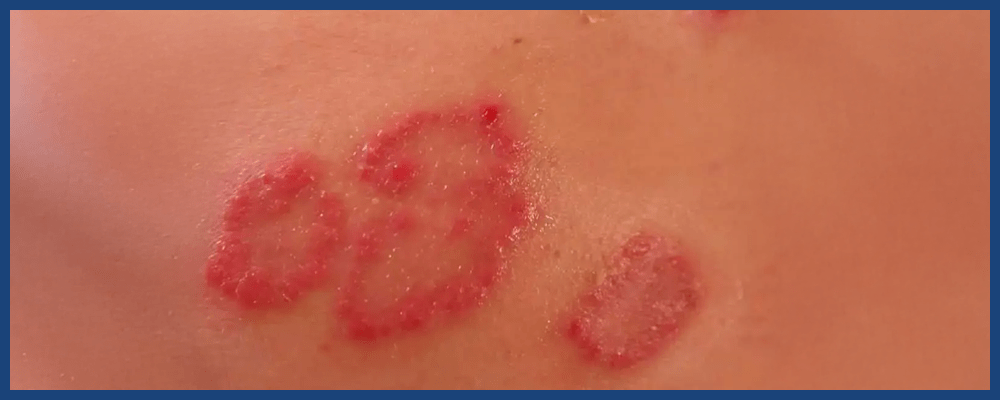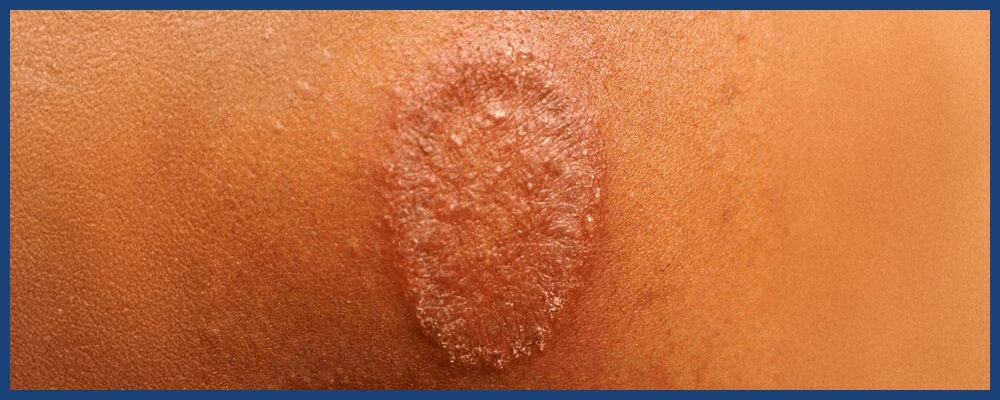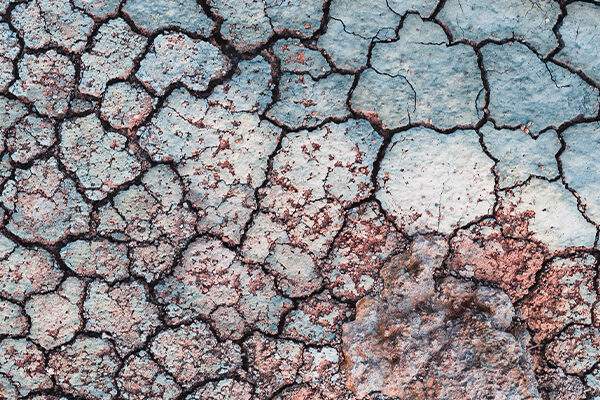Updated on April 4, 2025

Imagine waking up one morning and noticing an angry, itchy, red patch on your skin. Your first thought? Did I get bitten by something? Is this an allergic reaction? Or, oh no, is this ringworm?
It’s easy to jump to conclusions when it comes to skin conditions, especially when they look similar. Two of the most commonly confused conditions are nummular eczema and ringworm. Both can cause circular rashes, both can itch, and both can be frustrating to deal with. But while they may appear alike at first glance, their causes, symptoms, and treatments are worlds apart.
Once you determine the cause of the itchiness, you can seek appropriate treatment and begin your recovery with Revival Research Institute’s dermatology clinical trials.
So, how can you tell the difference? Let’s break it down in a way that makes sense, even if you’re not a dermatologist.
Symptoms at a Glance: What Do They Look Like?
While nummular eczema and ringworm both show up as red, scaly, circular rashes, some key differences can help you identify which condition you might have.
Nummular Eczema Symptoms:
- Multiple patches scattered across the body especially on the legs, arms, torso, hands, or feet.
- Color variation patches can be red, pink, brown, or even yellow if there’s an infection.
- Intense itching sometimes severe enough to disrupt sleep.
- Burning sensation affected areas may feel hot and irritated.
- Dry, cracked skin a hallmark of eczema in general.
Ringworm Symptoms:
- One or a few isolated patches, rather than widespread clusters.
- A defined, raised border creating a ring-like shape.
- No color variation usually red or pink throughout.
- Minimal itching though it varies from person to person.
- No burning sensation ringworm doesn’t cause inflammation like eczema does.
Still unsure? One telltale sign is that nummular eczema patches aren’t perfectly round, they tend to have irregular, scattered edges. Ringworm, on the other hand, lives up to its name with a distinct ring shape and clear center.
Nummular Eczema vs. Ringworm: Key Differences
| Feature | Nummular Eczema | Ringworm |
|---|---|---|
| Cause | Allergies, irritants, genetics | Fungal infection |
| Appearance | Coin-shaped, inflamed patches | Circular rash with a clear center |
| Itching | Can be severe and persistent | Itchy, but may not always be intense |
| Borders | Irregular, blurry edges | Well-defined, raised edges |
| Contagious | No | Yes |
| Location | Common on arms, legs, torso | Can appear anywhere, including scalp and feet |
| Treatment | Moisturizers, steroids, avoiding triggers | Antifungal creams or medications |
Nummular Eczema vs. Ringworm: What’s Causing Your Rash?
The causes of nummular eczema vs. ringworm couldn’t be more different.
What Causes Nummular Eczema?
Doctors don’t know the exact cause of nummular eczema (also called nummular dermatitis), but it tends to develop after some kind of skin trauma like a scrape, insect bite, or an allergic reaction.
Other risk factors include:
- Dry skin: Especially in winter or low-humidity environments.
- Skin sensitivity: People with atopic dermatitis or contact allergies are more prone.
- Certain medications: Some acne treatments and harsh skincare products can trigger flare-ups.
- Age & gender: It is more common in men over 50 and women in their teens and 20s.
Also Read: All You Need To Know: What Causes Eczema Flare-ups?
What Causes Ringworm?
Despite its creepy name, ringworm isn’t a worm at all, it’s a fungal infection (tinea corporis). The fungus thrives in warm, moist environments and spreads easily through:
- Skin-to-skin contact with an infected person or pet (especially cats!).
- Sharing towels, clothing, or gym equipment that carry fungal spores.
- Walking barefoot in damp public areas like pools and locker rooms.
- Gardening as fungal spores live in soil.
If you’ve recently been in a humid environment or around pets with patchy fur, ringworm might be the culprit.
Nummular Eczema vs. Ringworm: How to Tell the Difference at Home
If you’re unsure whether you have nummular eczema vs. ringworm, here are some quick tips:
- Look at the shape: Nummular eczema tends to have irregular, dry patches, while ringworm has a clear center with raised, scaly edges.
- Check the spread: Ringworm spreads outward, while eczema stays localized but may grow in size.
- Consider recent exposure: Been to the gym, shared a towel, or handled an animal? It might be ringworm.
- Test with antifungal cream: If an over-the-counter antifungal treatment (like clotrimazole) clears it up within a week, it’s likely ringworm.
- Check for weeping or oozing: Nummular eczema can become wet and crusty, whereas ringworm remains dry and scaly.
Could It Be Psoriasis?
Many people also confuse eczema, ringworm, and psoriasis. Psoriasis is another chronic skin condition that causes red, scaly patches, but it often comes with:
- Silvery-white scales on top of red plaques
- Thickened skin
- Pain or burning sensations
- Patches on elbows, knees, scalp, or lower back
Unlike ringworm, psoriasis isn’t contagious, and unlike eczema, it’s related to an overactive immune system.
Treatment: Nummular Eczema vs. Ringworm
Once you have a diagnosis, treatment becomes much easier.
How to Treat Nummular Eczema
Because eczema is an inflammatory condition, not an infection, it needs to be treated differently from ringworm:
- Moisturizing and hydrating is the key to healing eczema and preventing flare-ups.
- Avoid triggers like harsh soaps, allergens, and extreme temperatures can make it worse.
- Use prescription creams such as corticosteroids and anti-itch creams to help reduce inflammation.
- Take antihistamines as they can relieve severe itching and help you sleep.
- Phototherapy (light therapy), sometimes used for chronic cases.
How to Treat Ringworm
Since ringworm is a fungal infection, the goal while treating ringworm is to kill the fungus:
- Use antifungal creams, over-the-counter options like Lotrimin AF or prescription-strength treatments work well.
- Take oral antifungal medication—for stubborn cases, a doctor may prescribe antifungal pills.
- Keep the area dry as fungus thrives in moisture, so keeping skin clean and dry helps.
- Avoid spreading it, don’t share towels or clothing, and wash your hands often.
One big mistake people make? Using steroid creams on ringworm. This can actually make the infection worse by suppressing the skin’s immune response. If you’re unsure, always consult a doctor before applying for anything.
Final Thoughts
Nummular eczema vs. ringworm: two conditions that look alike but require completely different treatments. While both cause round, itchy patches, the key differences lie in their borders, causes, and whether they’re contagious. If you’re still unsure, consult a dermatologist, because treating the wrong condition could make things worse.
Remember, healthy skin starts with understanding it. Whether it’s eczema, ringworm, or psoriasis, the right diagnosis leads to the best relief. Stay informed, stay moisturized, and when in doubt, get checked out! Now, go forth and keep that skin healthy and happy!







